by Elodie Leveque & Louise O'Connor, Conservation
Conservators love knowing how a book was put together, and recently, we had the opportunity to examine a very interesting item. Despite being in good condition, the book needed some minor conservation treatment. But first, by closely examining the binding and the inner structure normally hidden from our eyes, an interesting story unfolded...
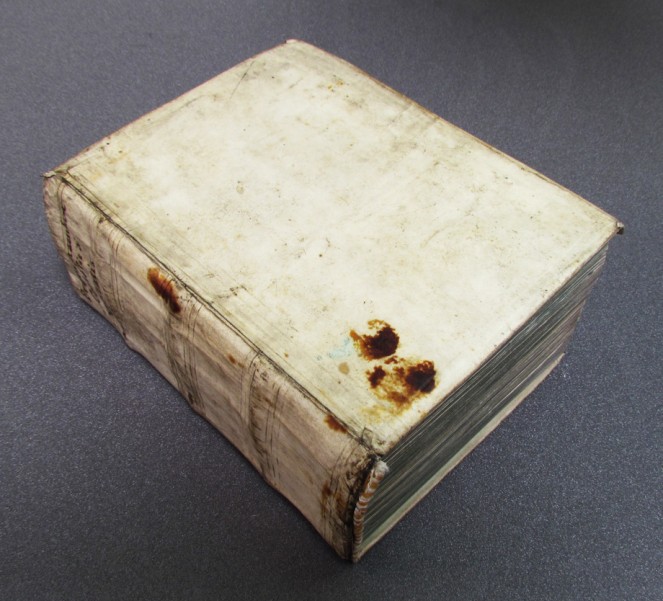
The book cover
The most obvious thing about this binding is that it is covered in cream vellum (well once upon a time it was cream). From the 16th century, vellum binding was common with over 50 per cent of book covers being covered with it (the term vellum is also commonly used for a thinner type of parchment). Vellum is a strong material with a smooth surface used for writing and bookbinding. It is made by drying out the thin limed skins of sheep, goat, calf or pig, without any tanning process (application of an acidic chemical compound making the skins more durable) – the material is thoroughly cleansed, degreased and smoothed during the process.
During the 17th century, there was in increase in printed volumes, and Octavo pocket editions like this one, were produced in quantities from 500 up to 2000 copies – today, books are printed in millions of copies for one title! (Octavo is a term describing the format of a book that is made from a full sheet of paper on which 16 pages of text were printed, and then folded three times to produce eight leaves.) Many such works were issued by the printers/booksellers already covered with vellum and were meant to be a temporary protection for books and designed to be easily removed. Vellum bindings were offered at a cheaper price than the full-leather options. The buyer could later choose a custom-made leather binding of his choice from a bookbinder, perhaps to match his own library.
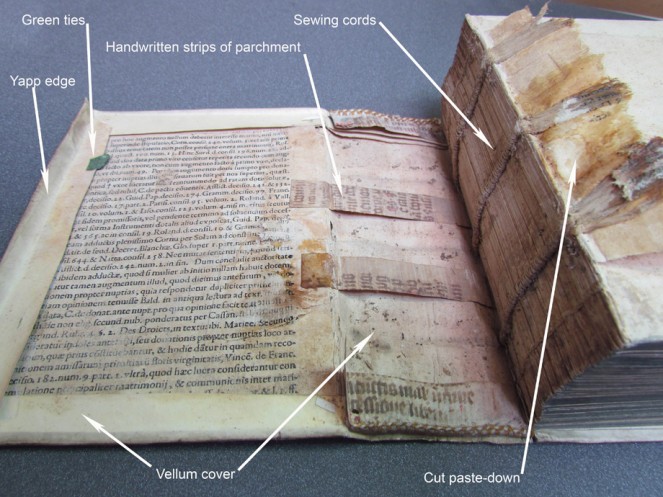
This is what we found underneath the cover
On opening the volume, we could see that the pages are sewn on plant-fibre cords with a linen thread. Before the book was damaged, the ends of the cords were glued directly onto the boards which are made of layers of pages of an older printed book. In the photograph below, you will see a printed initial letter and Latin text, which was the beginning of an old book chapter! In 16-17th centuries, bookbinders often re-used scraps of older manuscripts or incunabula, written or printed on parchment in the previous years or even centuries.
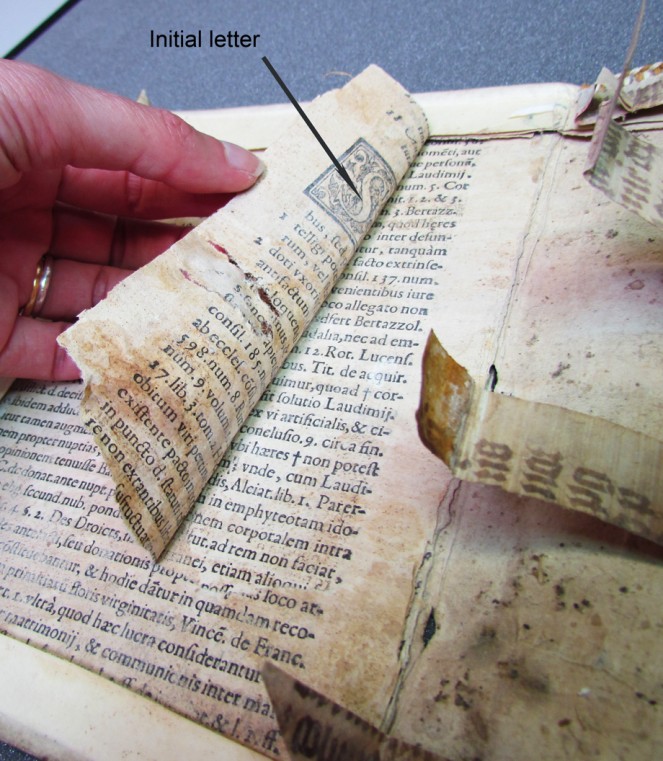
The pasteboards were made of old book pages
As damp and mould had damaged the volume, the old hand-written strips of parchment that were originally glued to the spine, to reinforce both the structure of the book and the attachment of the cover to the textblock, were now visible. This book is therefore known as a ‘case’ or ‘limp vellum’ binding with the pastedown forming a large part of the attachment between textblock and the cover.
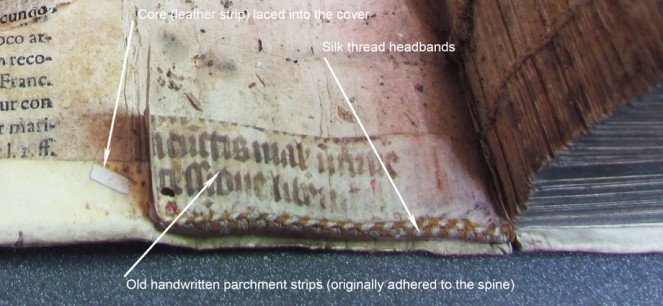
Detached headbands
On the top (head) and bottom (tail) ends of the cover, there are pink and white headbands. These consist of a core (here, an alum tanned leather thread) around which coloured silk threads were sewn. The two ends of the core were then twisted and laced or pushed through the boards of the book to attach the cover to the textblock. In addition, the headbands are directly glued onto the spine – this was common practice in Germanic countries from the 16th century. They were made by sewing two coloured silk threads with a cross-over beading onto an extended strip of parchment. The strip was then simply glued on the spine.
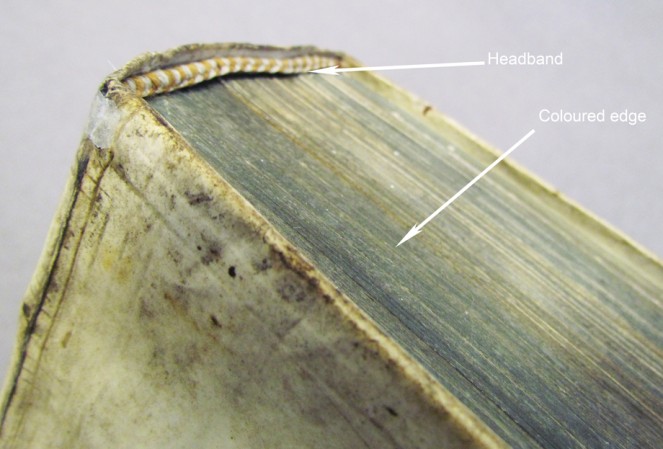
The coloured edge and headband
Other features of the book include cover flaps protecting the blue/green coloured edges of the textblock and remnants of silk green ties hidden under the pastedown, which once held the book closed. By keeping the book tied this would have prevented the vellum cover from distorting, as a common feature of vellum is its hygroscopic nature (absorbs moisture). The title is simply handwritten in ink on the spine.
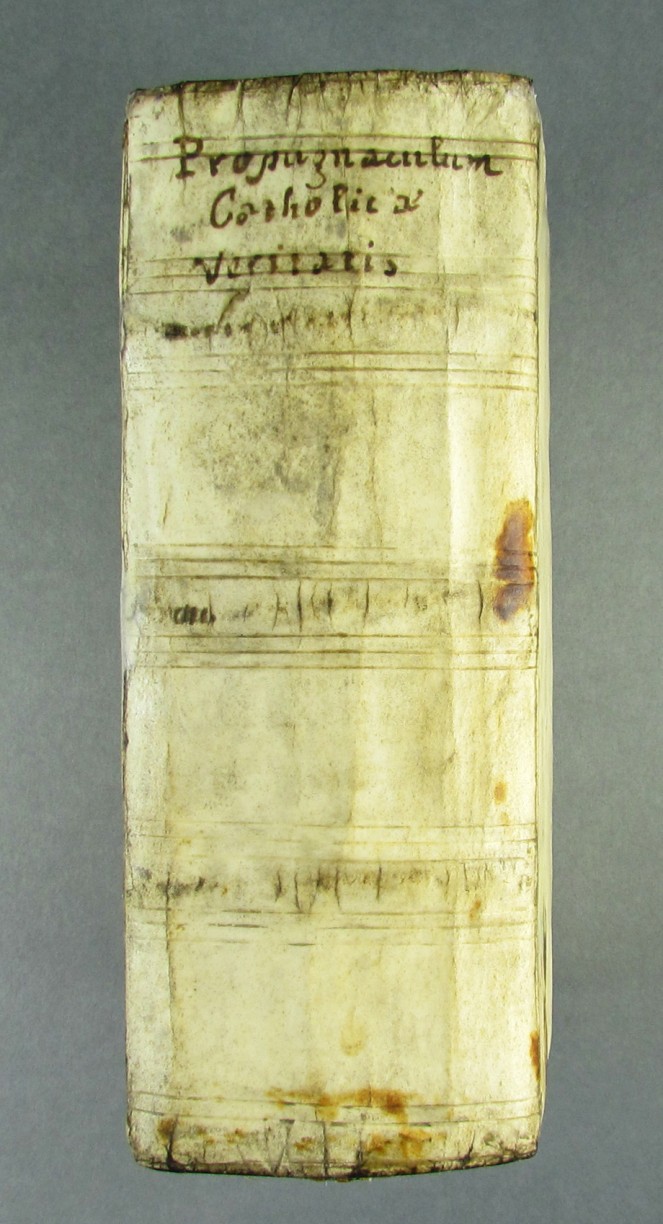
Hand-written title on the spine
What does all this tell us?
It therefore seems that the book has a 17th century Germanic binding technique and once was a very attractive cream and green/blue volume. In fact the title page confirms our observations. This volume, Propugnaculum Catholicæ Veritatis, Libris X, was published in 1669, in Prague by Anton Bruodinus and with 1100 pages is an extraordinary work on Irish history! Fr. Anthony Broidin compiled several works of historical interest whilst teaching in the Irish College in Prague. His best-known volume Propugnaculum Catholicæ Veritatis, gives an account of all who suffered martyrdom in Ireland during the years 1640 to 1660 .
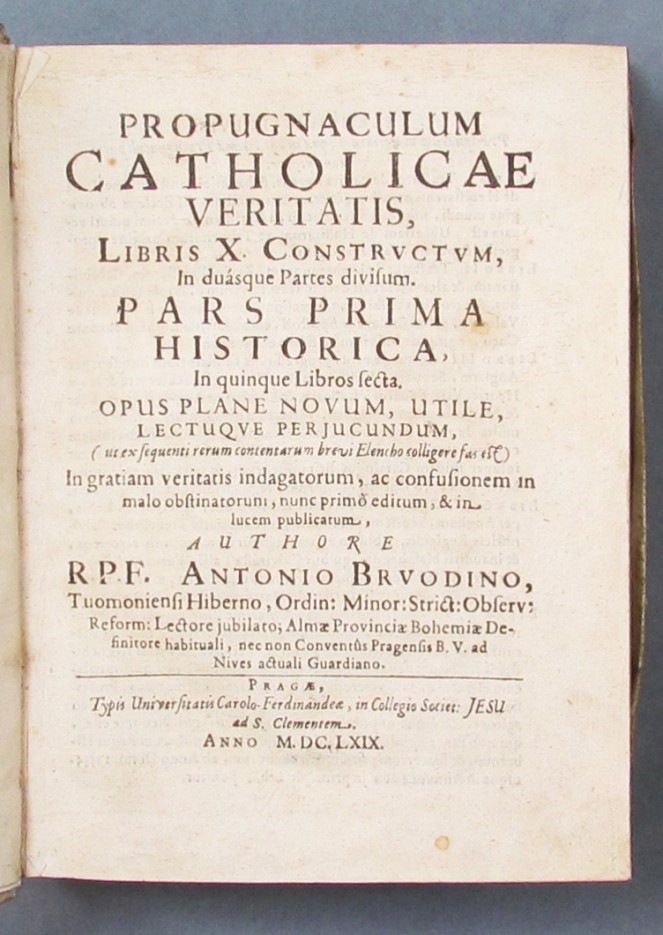
Title page of Propugnaculum Catholicae Veritatis, 1669
Today, vellum bindings are used as a conservation structure for various types of volumes. Vellum bindings protect the text block for longer over time because of the simplicity of the construction, yet durability of the components. They are also easily reversible.
Judging a book by the cover, this book certainly tells an interesting story; it was fantastic to see an original “temporary” binding from the 17th century! The next thing is of course, how did it get to here? Maybe for another day...

